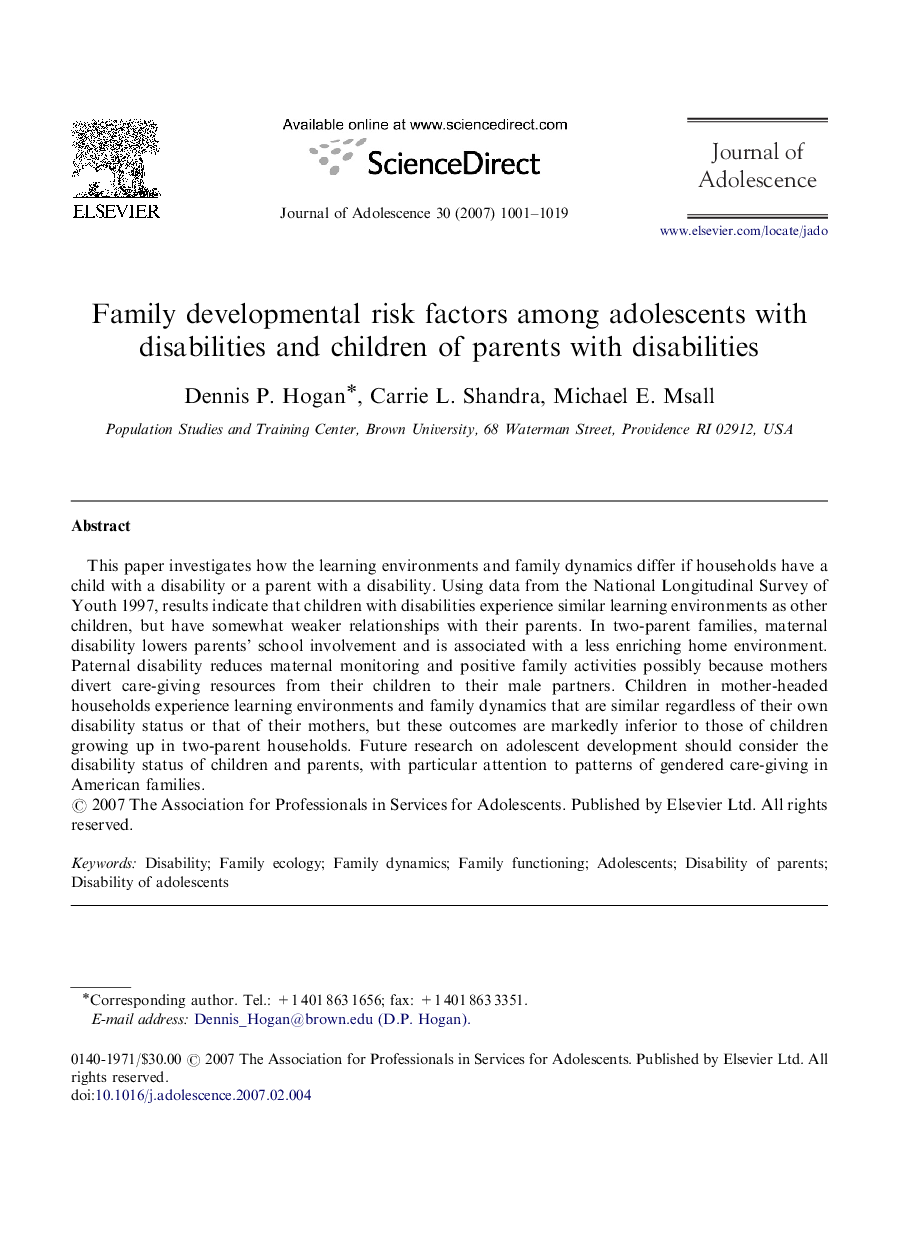| Article ID | Journal | Published Year | Pages | File Type |
|---|---|---|---|---|
| 881369 | Journal of Adolescence | 2007 | 19 Pages |
This paper investigates how the learning environments and family dynamics differ if households have a child with a disability or a parent with a disability. Using data from the National Longitudinal Survey of Youth 1997, results indicate that children with disabilities experience similar learning environments as other children, but have somewhat weaker relationships with their parents. In two-parent families, maternal disability lowers parents’ school involvement and is associated with a less enriching home environment. Paternal disability reduces maternal monitoring and positive family activities possibly because mothers divert care-giving resources from their children to their male partners. Children in mother-headed households experience learning environments and family dynamics that are similar regardless of their own disability status or that of their mothers, but these outcomes are markedly inferior to those of children growing up in two-parent households. Future research on adolescent development should consider the disability status of children and parents, with particular attention to patterns of gendered care-giving in American families.
